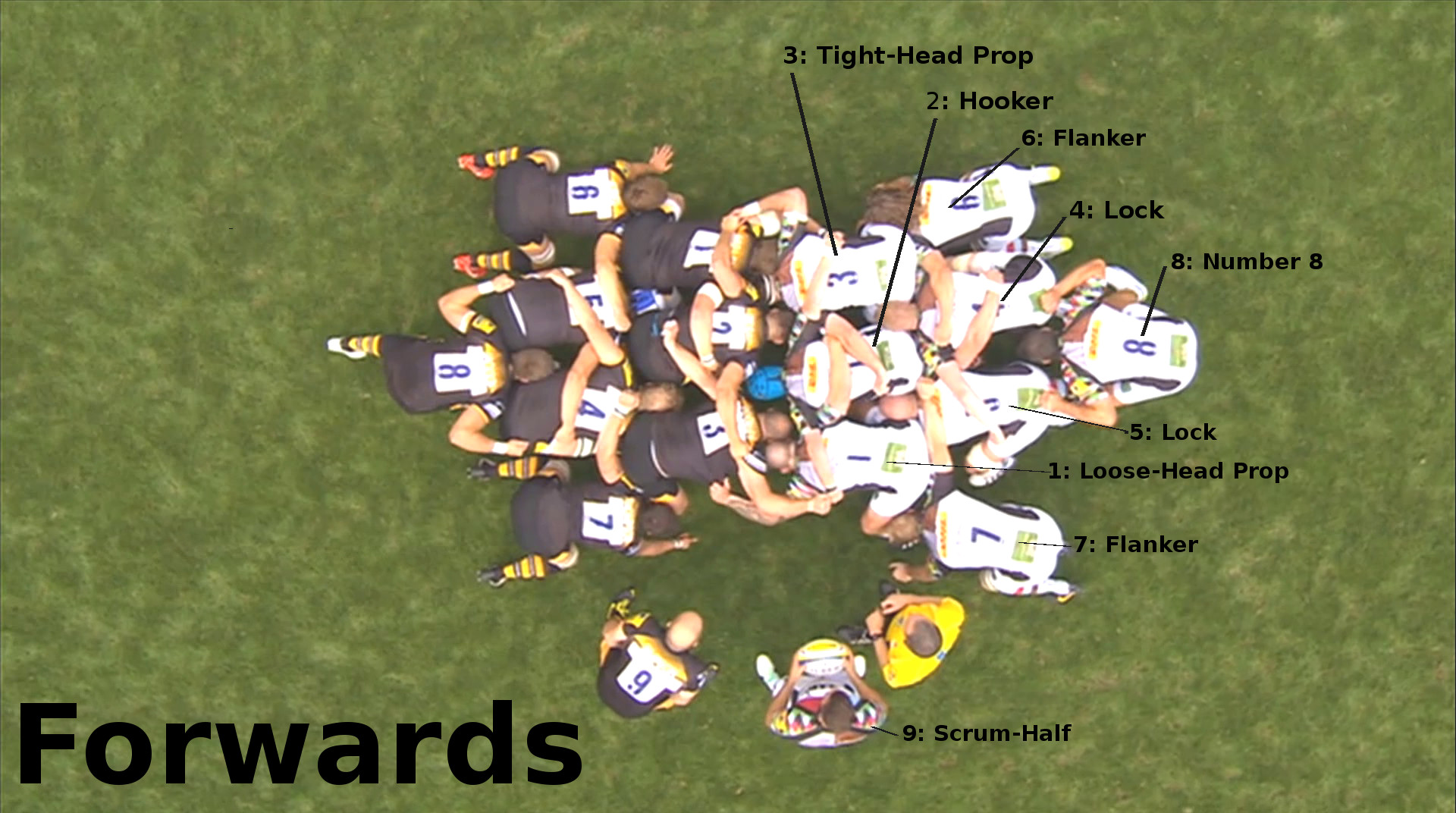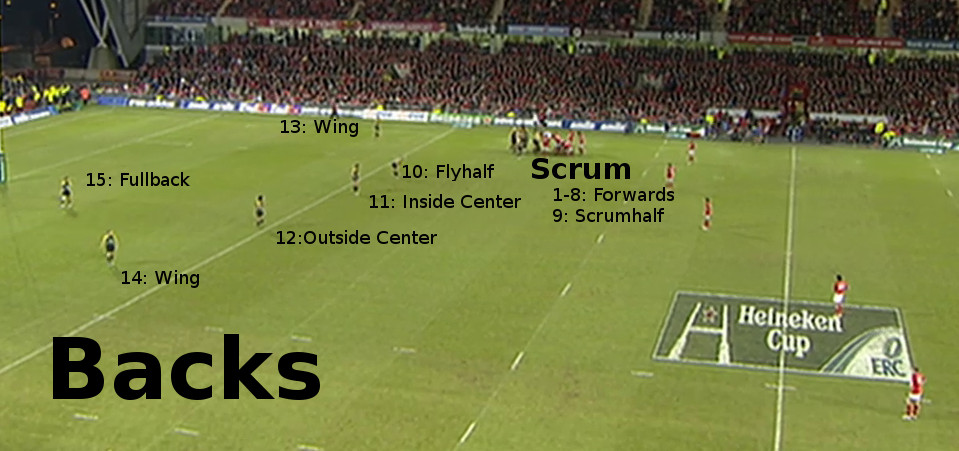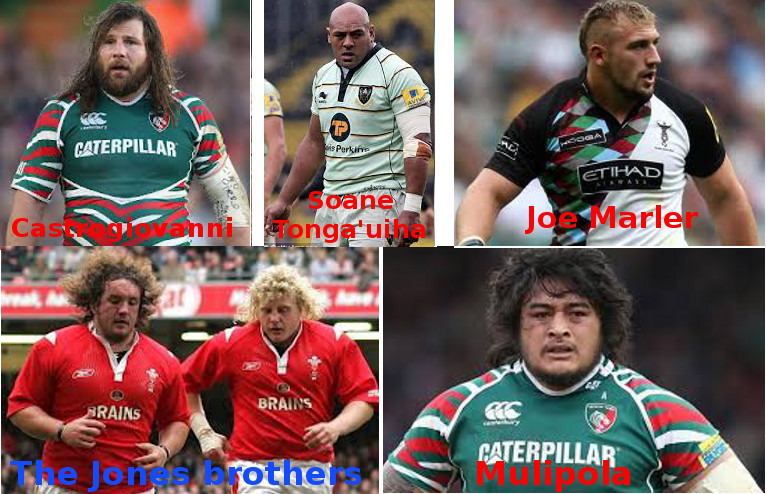the Virtual Rugby Referee
Rugby Players:
Rugby is a full contact team sport that is closely related to the original roots of soccer. The contact nature of Rugby has encourages the participation of large, fast players (Forwards) and not-so-large, faster players (Backs). However, as in all sports, we are seeing the forwards (larger players) getting faster, and the backs (smaller players) getting larger. Still, the backs must have excellent ball-handling skills, while this not as important for the forwards.
The jersey number (of the starters) corresponds to the position of that player. Forwards are numbered 1-8, with the positions shown in the figure below:

Backs wear 9 through 15.

Among the various positions, the props are probably the most distinctive. The prop forms the base of the set scrum, and his shoulders are where the 2 1-ton packs meet. Although the hooker is also in the front row, the hooker's job is to use his feet to secure the ball, and he is not always available to help with the push or to absorb the force coming from the other team - most of that role falls to the props. Therefore, a good prop needs wide shoulders and a steady base, so the average international prop is going to be about 6'2" and 250 lbs. Note that, unlike American pointy-ball, these forwards are expected to be running the entire match - these are not "in for 30 second then out for 5 minutes" players. Here are some examples of the more famous props:

Another distinctive position is the lock. The lock is in the second row of the set scrum, and also provides push. However, one of the main roles of the lock is to secure the ball on a line-out. So, locks tend to be taller rather than stocky, but they must also be strong. The average international prop is going to be about 6'7" and 250 lbs. Here are some examples of the more famous locks:

Finally, to go to the other end of the spectrum, we have the scrum-half. The scrum-half's job is to handle the transition of the ball from the forwards (during a set scrum or ruck) to the backs. He is also, to a certain extent, the "quarterback" of the team (a role shared with the fly-half and the centers). Scrum-halfs tend to be smaller and quicker - the smaller body allows the scrum-half to reach into a ruck and deliver the ball quickly to the backs. A typical scrum-half is about 5'10" and 175 lbs. Here are some examples of scrum-halfs (notice the relative height compared with the players trying to tackle them):

For more information see:
- Wikipedia: International Rugby Board
- IRB: Rugby Union Laws
- Player sizes: Player sizes 2012/13